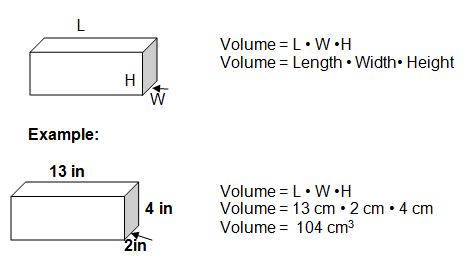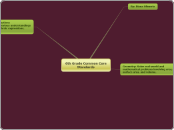6th Grade Common Core Standards
By: Diana Olivarria
Geometry: Solve real-world and mathematical problems involving area, surface area, and volume.
6.G.A.1: Find the area of right triangles, other triangles, special quadrilaterals, and polygons by composing into rectangles or decomposing into triangles and other shapes; apply these techniques in the context of solving real-world and mathematical problems.
Here is a video of how to find the Area of a Right Triangle
Su6.G.A.2: Find the volume of a right rectangular prism with fractional edge lengths by packing it with unit cubes of the appropriate unit fraction edge lengths, and show that the volume is the same as would be found by multiplying the edge lengths of the prism. Apply the formulas V = l w h and V = b h to find volumes of right rectangular prisms with fractional edge lengths in the context of solving real-world and mathematical problems.btopic

Here is an example of how to find the volume of a Rectangular Prism.
Expressions and Equations
Apply and extend previous understandings of arithmetic to algebraic expressions.
6.EE.A.1: Write and evaluate numerical expressions involving whole-number exponents.
Here is some practice using exponents.
6.EE.A.2: Write, read, and evaluate expressions in which letters stand for numbers.
a. Write expressions that record operations with numbers and with letters standing for numbers. For example, express the calculation “Subtract y from 5” as 5 – y.
b. Identify parts of an expression using mathematical terms (sum, term, product, factor, quotient, coefficient); view one or more parts of an expression as a single entity. For example, describe the expression 2 (8 + 7) as a product of two factors; view (8 + 7) as both a single entity and a sum of two terms.
c. Evaluate expressions at specific values of their variables. Include expressions that arise from formulas used in real-world problems. Perform arithmetic operations, including those involving whole-number exponents, in the conventional order when there are no parentheses to specify a particular order (Order of Operations). For example, use the formulas V = s3 and A = 6 s2 to find the volume and surface area of a cube with sides of length s = 1/2.
Here is a very fun game to practice your multiplication skills and to solve equations that have letters instead of numbers.
6.EE.A.3: Apply the properties of operations to generate equivalent expressions. For example, apply the distributive property to the expression 3 (2 + x) to produce the equivalent expression 6 + 3x; apply the distributive property to the expression 24x + 18y to produce the equivalent expression 6 (4x + 3y); apply properties of operations to y + y + y to produce the equivalent expression 3y.

Here is an example of how the distributive property works.
